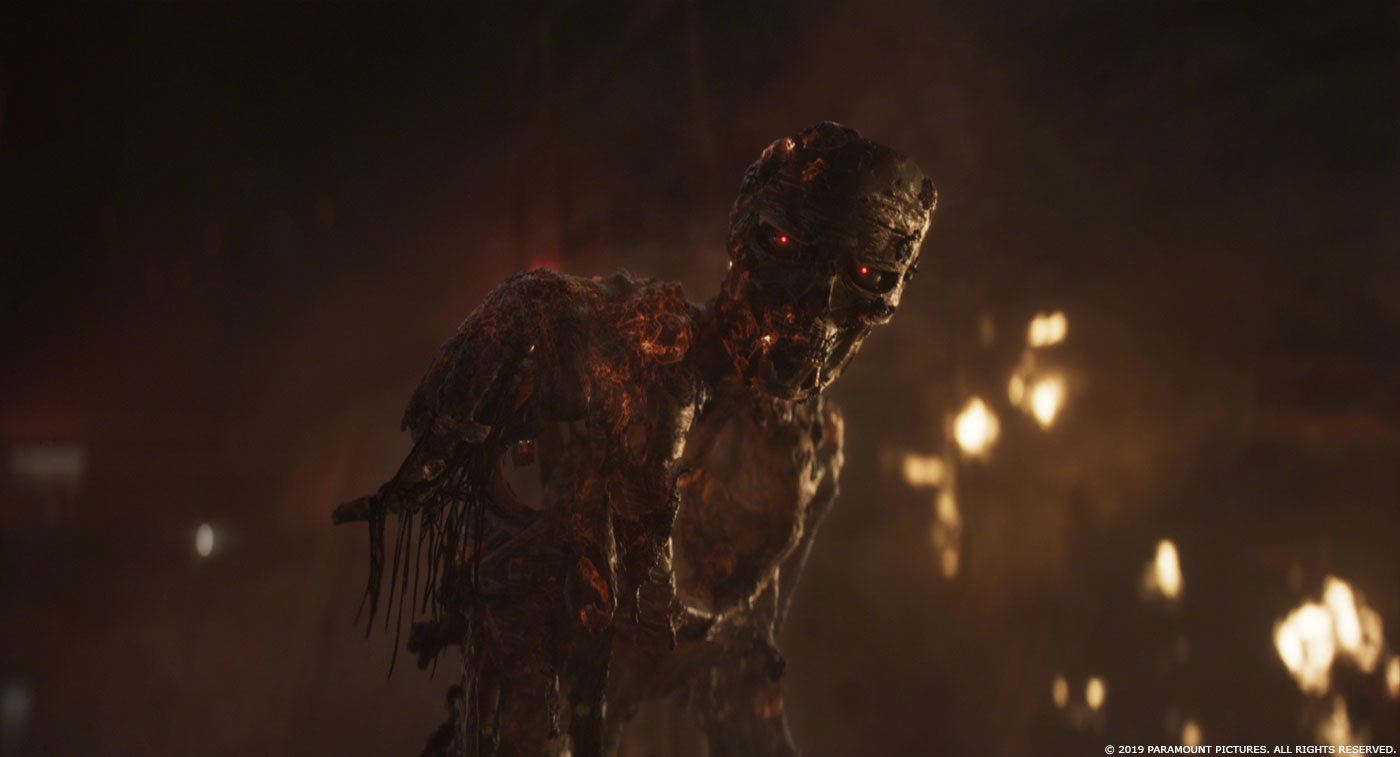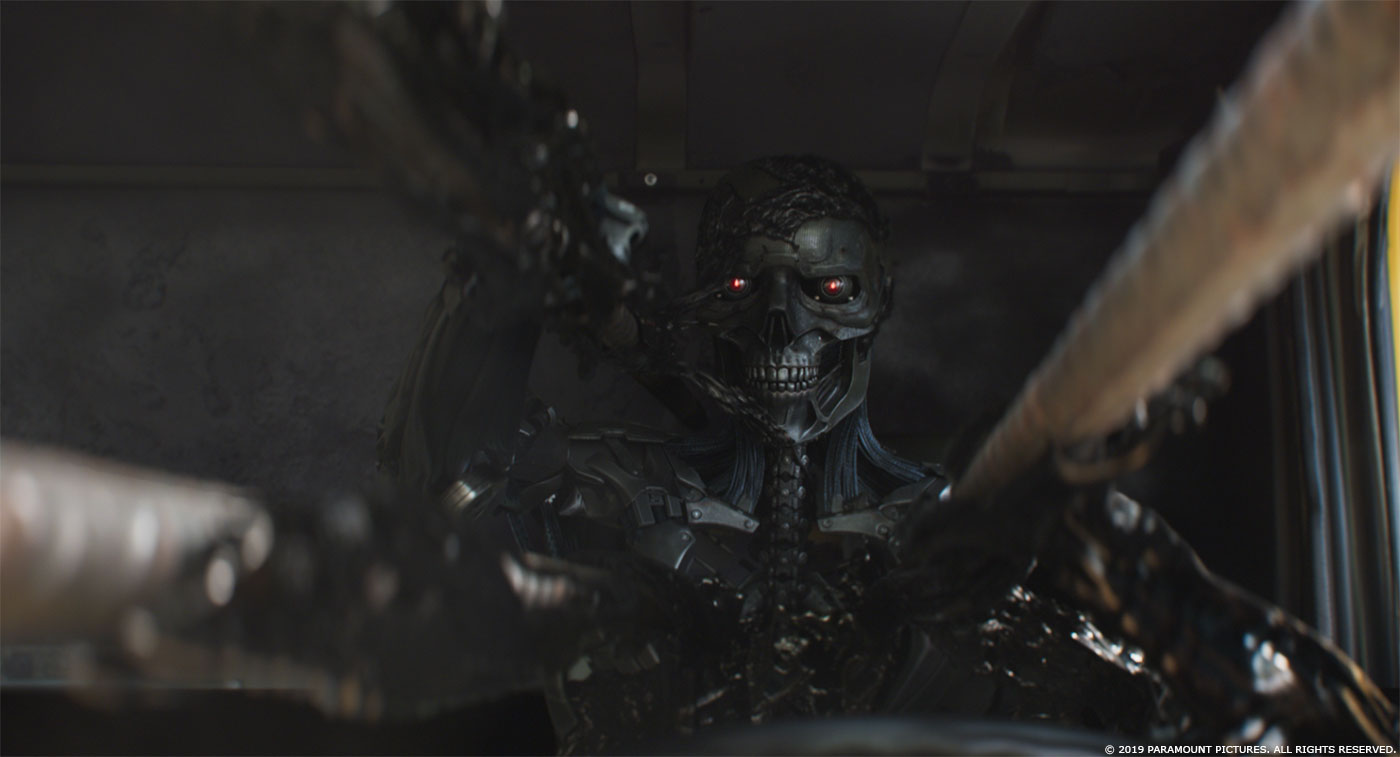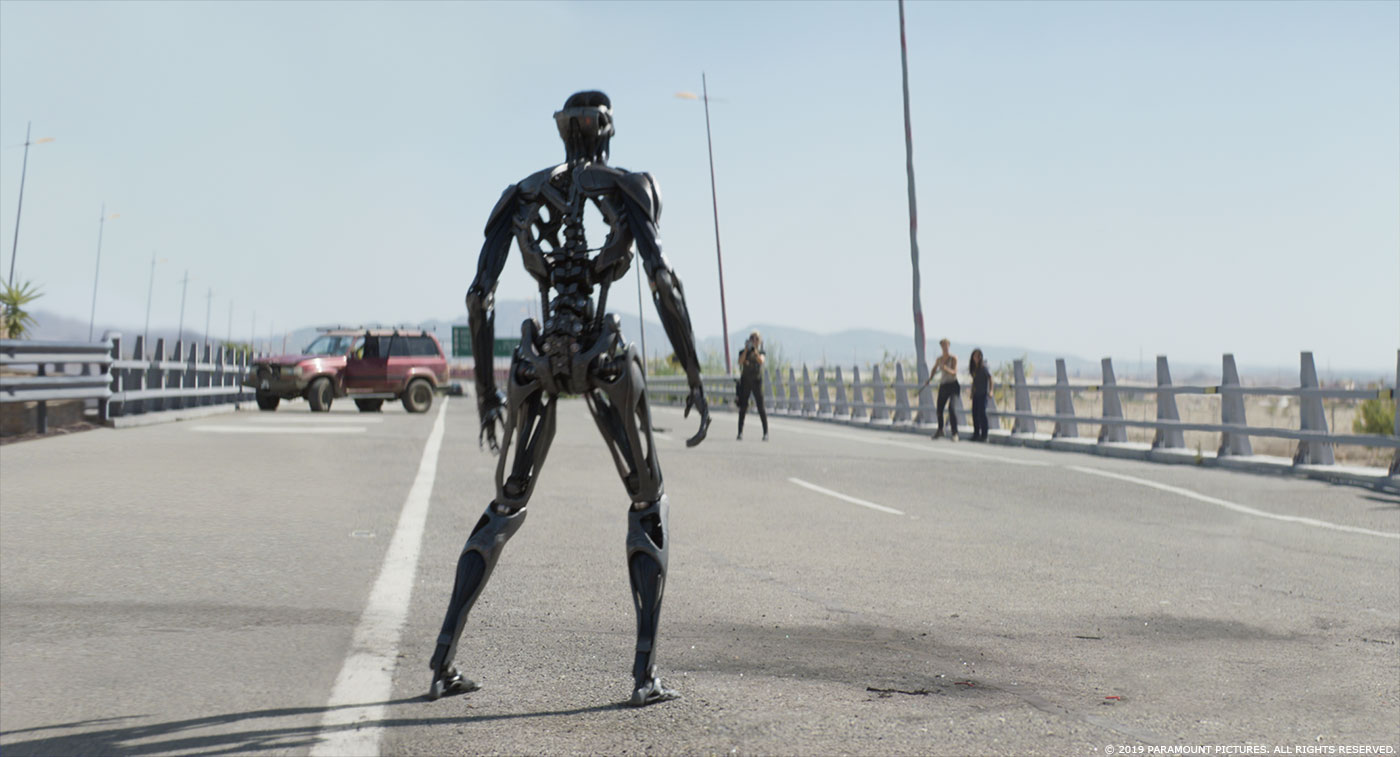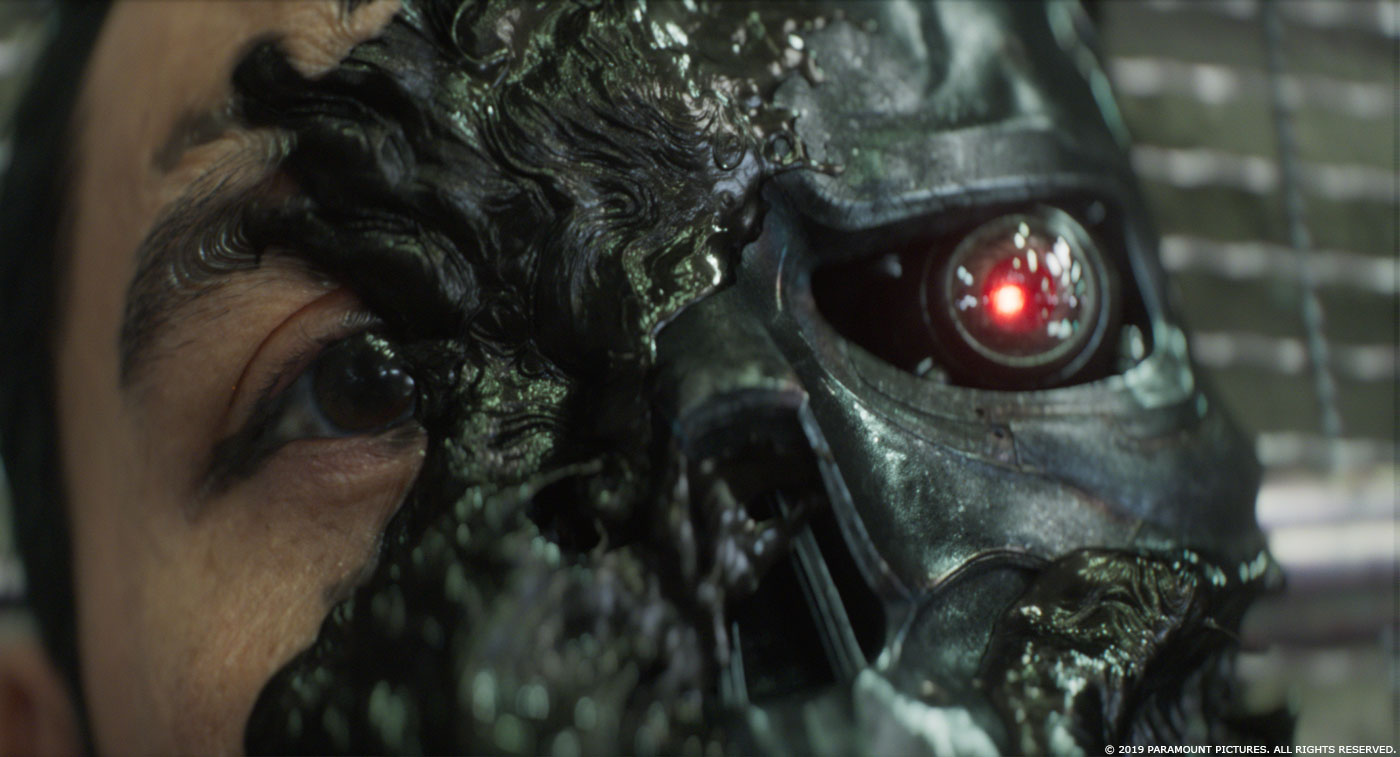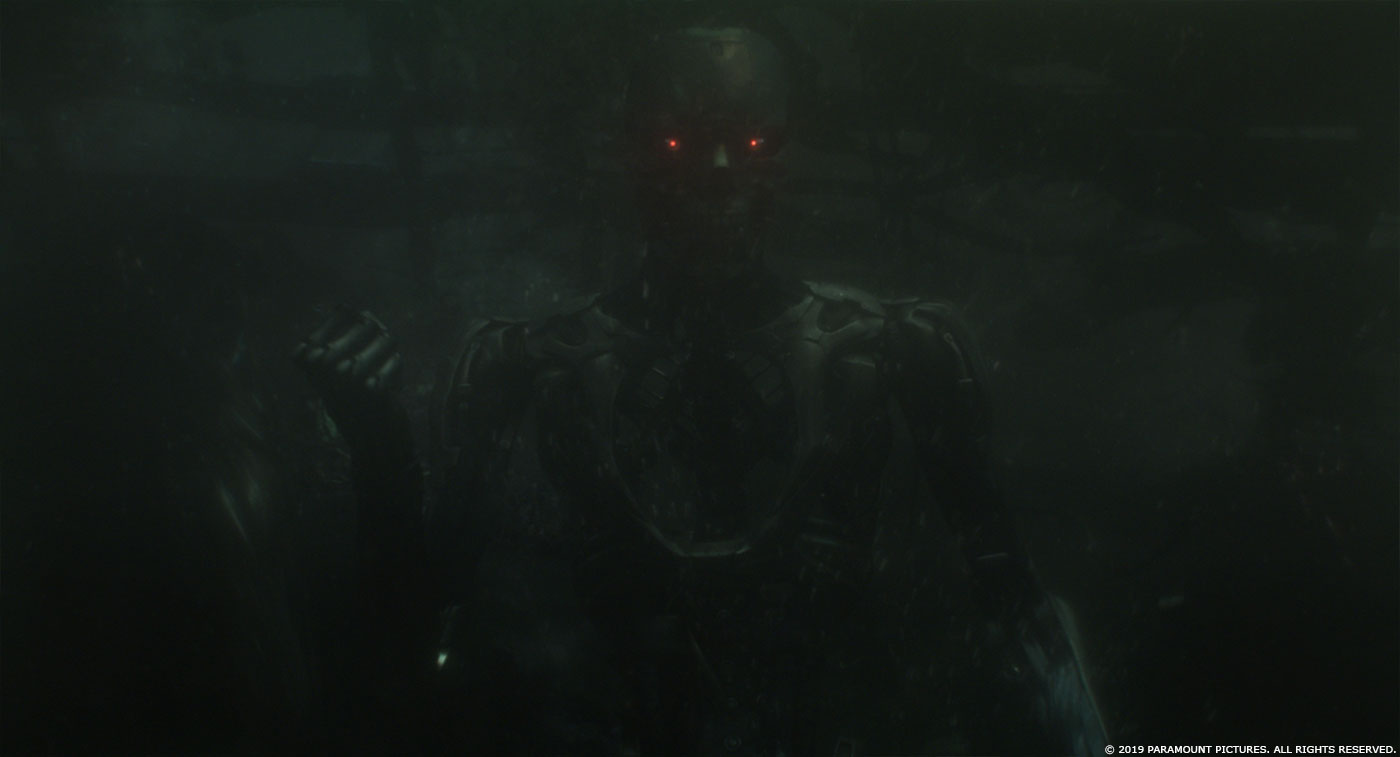Eric Barba began his visual effects career more than 27 years ago. After working for nearly 20 years at Digital Domain, he joined ILM in 2016. He took care of the effects of films such as ZODIAC, TRON: LEGACY, OBLIVION and ONLY THE BRAVE. He won an Oscar for Best Visual Effects for THE CURIOUS CASE OF BENJAMIN BUTTON.
How did you get involved on this show?
Tim Miller asked me if I would be interested in doing the film.
How did it feel to be part of the Terminator franchise?
I was super excited. I am a huge fan of T2 and what it did to the VFX business. Jim Cameron was going to be involved, so I couldn’t say no. Who wouldn’t want to see the true sequel to T2 come to life?
How did you organize the work with your VFX Producer?
Lisa and I have been working together for a long time having done ZODIAC, THE CURIOUS CASE OF BENJAMIN BUTTON, TRON: LEGACY, and started OBLIVION and ENDER’S GAME together. We also did commercials together for some years prior to ZODIAC so we knew how each other worked. We broke down the film and found partners that would help us in each of the sequences we need to get done. It was a challenge, as the film was being cut right up to the last minute, thankfully Lisa is an organization ninja.
This movie introduce new Terminators, the REV-7 and REV-9. How did you work with the art department for their design?
Tim had started working with several concept artists prior to any of the department heads coming on board, so he had a running start on what he wanted. While he showed me and asked what I thought, it was really a collaboration effort with Tim, Jim Cameron and David Ellison.
What kind of references and indications did you receive for the REV and his dark metal look?
I showed Tim examples of different metals that we thought made sense. We did change the look a few times, as the initial thought was to make it like black carbon – a more advanced carbon fiber type material as we didn’t want to actually see the weave – Tim wanted it to look as if was grown. But in testing, it proved too dark for the film, and we needed to give it more diffuse value. So we ended up on a darker titanium for the main structure, and then carbon nano-muscles with other metal pieces thrown in for complements.
The REV can split into two characters. Can you explain in detail about it?
The idea was that the structure or “Endoskeleton” would contain enough negative volume to house the liquid metal that was on the inside of the structure (or skeleton) as well as the outside. The idea here was to make it feasible that the liquid metal could build the complete outer version of itself without the skeleton. This we called the “Chocolate bunny” version of the REV-9, and we show this as being hollow in the first sequence where Sarah Connor arrives and starts peppering it with large shotgun slugs.
There is an impressive sequence featuring younger versions of Sarah Connor, John Connor and the T-800. How did you create this de-aging effect?
We started off with scheduling our stars for facial scans at ICT. Paul Debvec and his team helped get all the required data, and at the same time allowed the ILM Medusa acquisition team to get the temporal facial expressions required. We ended up having to do a few sessions due to actor availability, but everyone made it work. Later, after our sequences were cut together we used Disney Research’s Anyma facial capture and solving system in two separate capture days in Los Angeles to get our stars facial performances.
During principal photography, we shot body doubles / actors playing the younger versions with multiple synced Alexa LF cameras. We used the same camera as we shot the rest of the film with, so that our projection / paint out and cleanup would be in the same color space. These body doubles were wearing head socks – grey hoodies with tracking markers on them. The heads would later be removed, and replaced by full CG heads of the younger Sarah, T-800 (Arnold) and a young John Connor. This gave the DP and director real heads to light, compose and direct, and later in editorial have the basic tone of what Tim was after. This meant that we would be adjusting eye lines, adding CG hair and interaction, matching tendon movement and generally relying on the team at ILM for making the performances work with the bodies, and with our stars.
We had the current day ICT data for Linda, Arnold, Mackenzie, Natalia and Gabe, but ILM still needed to create the younger versions from photos, and previous films. That’s the first big challenge, creating the photo real head assets that are unmistakable in likeness. The harder one is getting the CG heads to emote – and even harder still is getting the younger versions of the actors to emote from their own older performances. I had initially started the ball rolling on getting ILM to use Anyma on ALADDIN, and that went fairly well, so it was a natural choice. The Anyma system gives next generation facial solving, without some of the acquisition problems we have encountered from past systems. It also gives us 48fps movement, which is critical for accurate facial performance capture. The next piece of magic is the re-targeting of the Anyma facial data to the CG versions, ILM has a new retargeting system called BLINK that was developed on the last Avengers, and continued being developed on this film.
So to answer the question, it we a very involved process to create the younger versions of Sarah, Arnold, and John, one that pushed the innovation for all the processes used, and required a huge effort from everyone involved. Alex and Jeff can elaborate much further.
Which sequence or shot was the most challenging?
The TV Sequence was the most challenging. Having to create a young Sarah Connor, a young Arnold, and a young John Connor pegged the meter. One character in a film is hard, but doing three iconic characters together in one scene – a scene that opens the film – well that’s a challenge.
What is your favorite shot or sequence?
It’s like children, I have to look at the whole movie and not pick favorites. The teams working on this film all worked really hard and did a great job.
A big thanks for your time.
WANT TO KNOW MORE?
Industrial Light & Magic: Dedicated page about TERMINATOR: DARK FATE on ILM website.
© Vincent Frei – The Art of VFX – 2019


